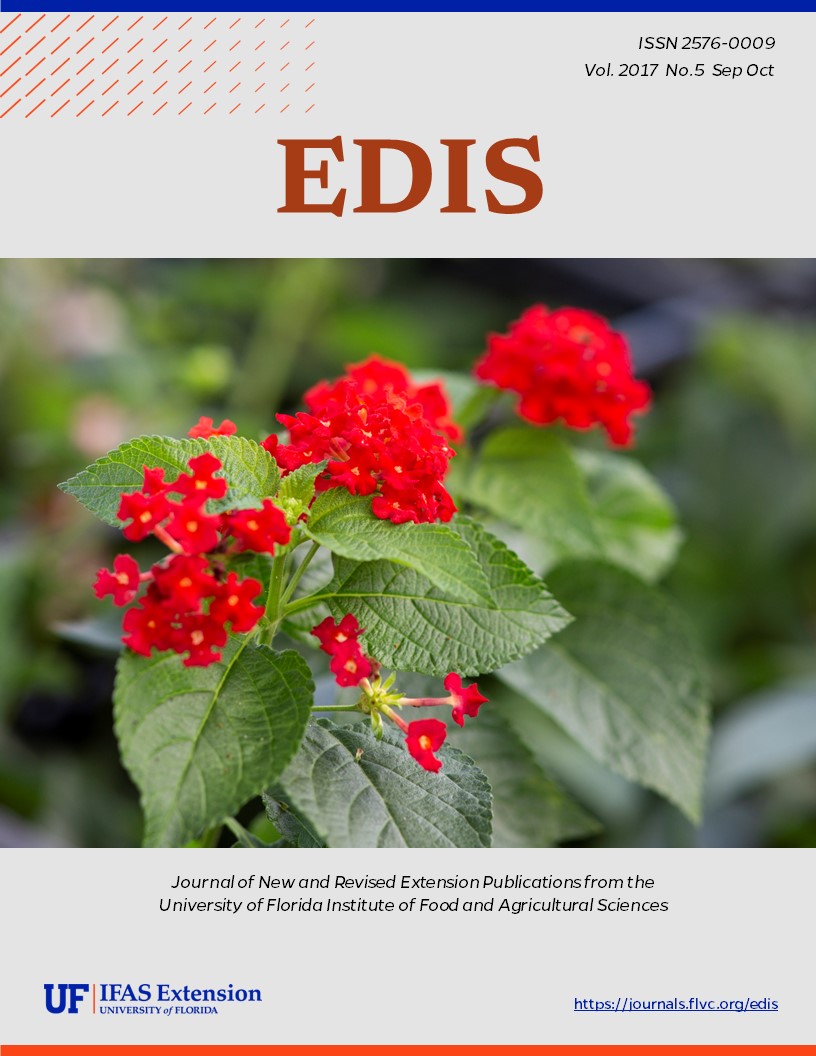Supplementary Files
Keywords
EP542
ENH278
liverwort
weed management
ornamental
nursery
greenhouse
Nursery Weeds
Hepaticophyta
ENH278
liverwort
weed management
ornamental
nursery
greenhouse
Nursery Weeds
Hepaticophyta
How to Cite
Marble, Stephen Christoper, Marc S. Frank, Dail Dail Laughinghouse, Shawn T. Steed, and Nathan S. Boyd. 2017. “Biology and Management of Liverwort (Marchantia Polymorpha) in Ornamental Crop Production: ENH278/EP542, 9/2017”. EDIS 2017 (5). Gainesville, FL. https://doi.org/10.32473/edis-ep542-2017.
Abstract
This article discusses management of liverwort in ornamental plant production. Liverwort is a unique weed species that poses special challenges for growers in terms of management. This article is the result of numerous consultations with FL growers seeking advice on management options for this species in nurseries, containers, and in greenhouses and other production areas.
This work is licensed under a Creative Commons Attribution-NonCommercial-NoDerivs 4.0 International (CC BY-NC-ND 4.0) license.
Most read articles by the same author(s)
- Sean Michael Campbell, Brian Pearson, Stephen Christoper Marble, Butterfly Pea (Clitoria ternatea) Flower Extract (BPFE) and Its Use as a pH-Dependent Natural Colorant , EDIS: Vol. 2019 No. 2
- Susannah da Silva, Binoy Babu, Mathews L. Paret, Gary W. Knox, Fanny Iriarte, Barron Riddle, Matthew Orwat, Shawn T. Steed, E. Vanessa Campoverde, Svetlana Y. Folimonova, Rose Mosaic Virus Disease: A Disease Caused by a Virus Complex and Symptoms on Roses and Management Practices , EDIS: Vol. 2018 No. 4
- Haywood Dail Laughinghouse, David E Berthold, Stephen Christoper Marble, Debalina Saha, Biología y Manejo de Nostoc (Cyanobacteria) en Viveros e Invernaderos , EDIS: Vol. 2019 No. 2
- Yuvraj Khamare, Stephen Christoper Marble, Shawn T. Steed, Nathan S. Boyd, Biology and Management of Spanish Needles (Bidens spp.) in Ornamental Crop Production , EDIS: Vol. 2019 No. 2
- Haywood Dail Laughinghouse, David Erwin Berthold, Stephen Christoper Marble, Debalina Saha, Biology and Management of Nostoc (Cyanobacteria) in Nurseries and Greenhouses , EDIS: Vol. 2019 No. 2
- Stephen Henry Brown, Marc S. Frank, Railroad Vine (Ipomoea pes-caprae): Identification and Uses , EDIS: Vol. 2020 No. 5
- Stephen Henry Brown, Marc S. Frank, Cocoplum (Chrysobalanus icaco L.) Identification and Uses , EDIS: Vol. 2018 No. 2
- Vance M. Whitaker, Nathan S. Boyd, Natalia A. Peres, Johan Desaeger, Sriyanka Lahiri, Peter J. Dittmar, 2020–2021 Vegetable Production Handbook: Chapter 16. Strawberry Production , EDIS: 2020–2021 Vegetable Production Handbook
- Kaley Mierek, Stephen Christoper Marble, Nathan S. Boyd, Shawn T. Steed, Biology and Management of Dodder (Cuscuta spp.) in Ornamental Crop Production and Landscapes , EDIS: Vol. 2018 No. 3
- Joshua H. Freeman, Eugene McAvoy, Nathan S. Boyd, Ramdas Kanissery, Hugh A. Smith, Johan Desaeger, Gary E. Vallad, Phillip B. Williams, Peter Dittmar, 2020–2021 Vegetable Production Handbook: Chapter 18. Tomato Production , EDIS: 2020–2021 Vegetable Production Handbook

